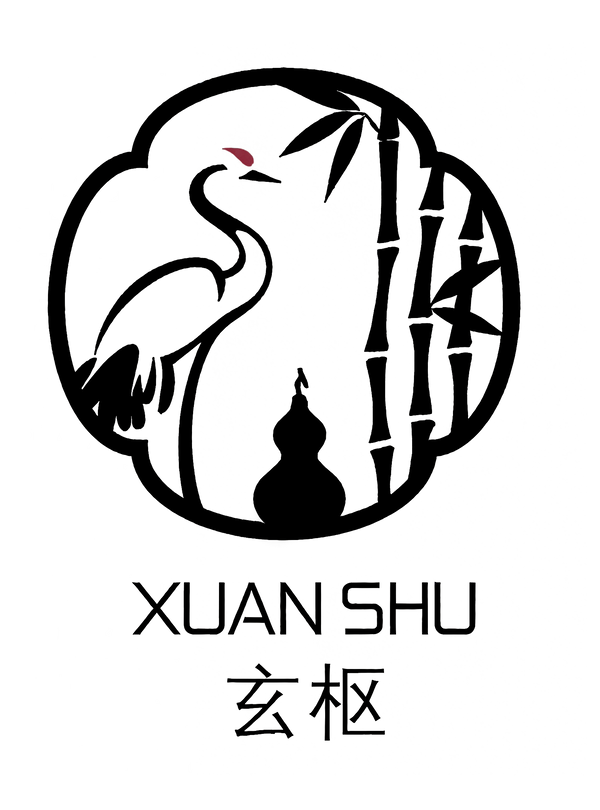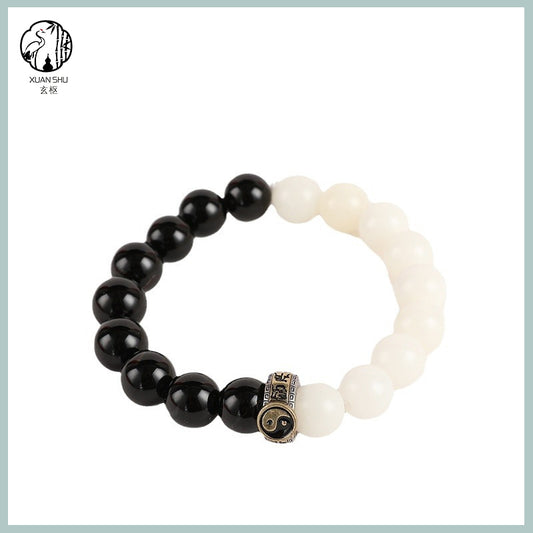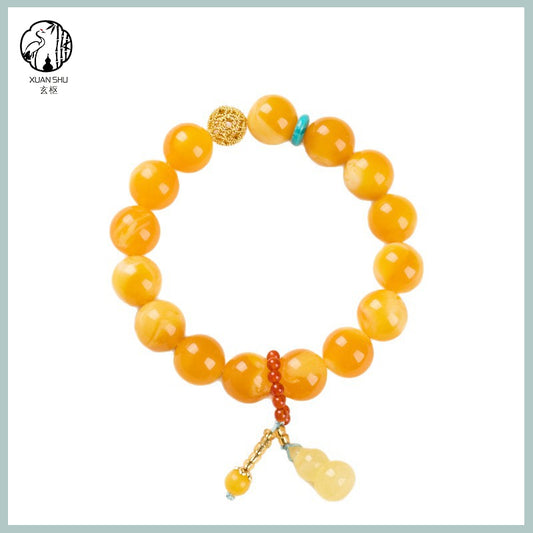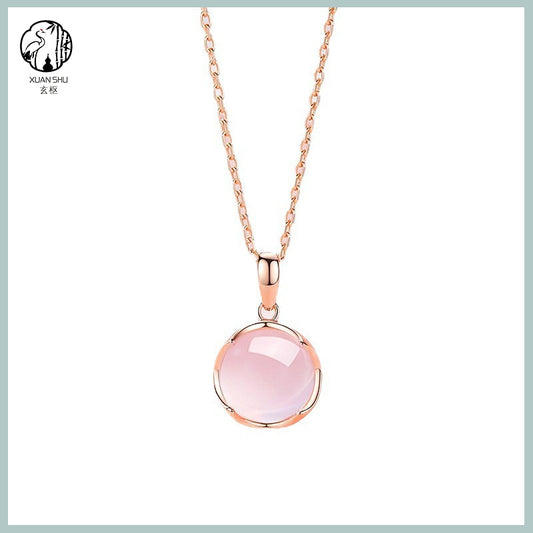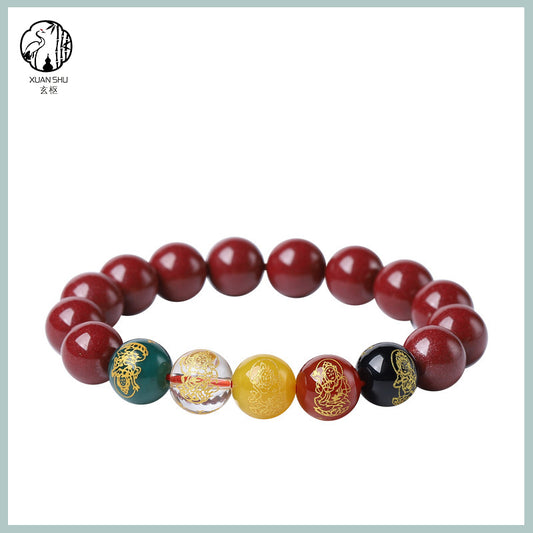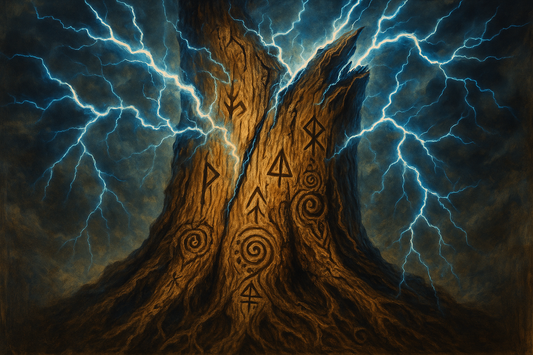What Does The Lotus Flower Mean In Taoism?
In traditional Chinese culture, the lotus flower is revered by Confucianism, Buddhism, and Taoism alike for its purity—"emerging unstained from the mud." In the Taoist tradition, the lotus not only symbolizes nobility and spiritual integrity, but also integrates deeply with core teachings such as internal cultivation, the pursuit of immortality, and ritual practices. It serves as a profound symbol bridging heaven and humanity, embodying the mystical connection between the mortal and the divine.

Spiritual Cultivation and Refining the Nature: The Lotus as a Metaphor for Taoist Practice
In the Taoist internal alchemy (neidan) tradition, the core principle of “borrowing the false to cultivate the true” is perfectly illustrated through the growth characteristics of the lotus flower. This aquatic plant, which rises from muddy waters while maintaining its pure and unstained nature, serves as a natural symbol for practitioners to contemplate the path of cultivation. Each part of the lotus corresponds metaphorically to key stages in the alchemical process.
The lotus root, as the foundational part of the plant, grows deep in the mud yet remains pure and white like jade. Taoism views this as a powerful image of a cultivator living in the world without being defiled by it. The Huang Ting Jing (Scripture of the Yellow Court) uses the vivid metaphor: “pure water from the jade pool nourishes the spiritual root,” which is inspired by the lotus root. Its porous and interconnected structure closely resembles the meridian system of the human body, aligning with the principle of “circulating the microcosmic orbit (zhou tian yun xing)”. By observing the structure of the lotus root, practitioners gain insights into the flow of essence and energy (jing and qi) within the body.
The lotus seed offers natural inspiration for the Taoist teaching of “illuminating the mind and realizing true nature.” Its bitter taste and balanced nature reflect the bitter yet steady process of spiritual refinement. Wang Chongyang, founder of the Quanzhen (Complete Reality) School, once taught, “One lotus heart leads to immortality,” emphasizing that cultivating the heart and refining the mind is the foundation of attaining longevity and transcendence. Though small, the lotus seed encapsulates the wisdom needed to transcend life and death.
The daily blooming and closing cycle of the lotus flower offers a natural lesson in controlling internal fire, a critical aspect of internal alchemy. Practitioners regard this rhythm as a living demonstration of advancing yang and retreating yin. In the influential Song-dynasty alchemical classic Wuzhen Pian (Awakening to the Real), it is written:
“When the red sun rises in the pond, darkness and demons vanish;
When the white moon shines on the mountaintop, the alchemical herbs sprout anew.”
This poetic verse uses the lotus’s opening and closing to illustrate the subtle dynamics of yin and yang during the refining process. This way of correlating natural phenomena with spiritual principles reflects Taoism’s profound wisdom of “Dao follows the patterns of nature (dao fa zi ran).”
Viewed as a whole, the complete life cycle of the lotus serves as a natural scripture of cultivation:
l Its roots buried in mud while the stalk rises through empty space symbolize the adept’s attitude of “blending with the world while preserving inner clarity.”
l The flower’s rhythmic blooming and closing reveals the cosmic law of yin-yang transformation.
l The bittersweet character of the lotus seed implies that true realization comes through hardship and perseverance.
This practice of interpreting plant characteristics as mirrors of alchemical truths demonstrates the unique mindset and spiritual wisdom of Taoist internal alchemy.
Immortal Belief: The Sacred Status of the Lotus in Taoism
Within the Taoist pantheon, the lotus is regarded as a sacred emblem associated with many deities, symbolizing the transcendent and pure realm of the immortals.
1. The Nine-Colored Lotus Platform of Taiyi Jiuku Tianzun
This supreme deity, known for relieving suffering and delivering souls, is often depicted standing atop a nine-colored lotus, symbolizing the act of “crossing hardships upon the lotus.”
In Taoist rituals for guiding the dead, priests frequently carry lotus lanterns to guide lost souls toward rebirth in the Lotus Realm.
2. He Xiangu’s Instrument of Enlightenment
As the only female among the Eight Immortals, He Xiangu is always portrayed holding a lotus flower, and legend says she attained immortality by consuming a sacred lotus.
In folk Taoist temples, devotees seeking health and longevity often offer “Immortal Maiden’s Lotus” in prayer to dispel illness and extend life.
3. The Lotus Delicacies of the Jade Pool Peach Banquet
According to the Han Wudi Neizhuan (The Inner Biography of Emperor Wu of Han), the Queen Mother of the West’s celestial banquet in the Jade Pool includes divine delicacies such as “jade lotus roots and iced lotus blossoms.”
During Taoist fasting and offering rituals (zhai-jiao), the lotus is a required offering to the Three Pure Ones (Sanqing), representing a “pure and elevated tribute.”
Ritual Magic: The Spiritual Power of the Lotus in Taoist Practices
Taoism regards the lotus as a plant imbued with special spiritual potency, and it is widely used in talismans, formations, and ritual implements.
Lotus Talismans for Warding Off Evil
According to the Dao Fa Hui Yuan (Compendium of Taoist Methods), writing the Five Thunder Talisman in cinnabar ink on a lotus leaf can be used to suppress floods and expel evil spirits.
During the Dragon Boat Festival, Taoist practitioners hang lotus flowers and mugwort together to form a "lotus-mugwort protective barrier", believed to ward off the Five Poisons.
Lotus Formations in Ritual Movement
In Thunder Rites (Leifa), Taoist priests often lay out lotus-shaped diagrams for ritual stepping patterns (bugang) to amplify magical power.
Soul-summoning banners are embroidered with lotus motifs to guide wandering spirits and help them “step upon the lotus and ascend to the beyond.”
Lotus Dew and Healing Talisman Water
In Baopuzi, Ge Hong writes that lotus dew collected at dawn and used to mix talisman water can treat eye ailments and purify the heart of demonic influences.
In modern Taoist medicine, “lotus-heart tea” is still used to clear excess heart fire, reflecting the Taoist wisdom of “medicine and food sharing the same origin.”

The Lotus in the Five Elements System
In Taoist cosmology, the lotus embodies a unique holographic manifestation of the Five Elements (Wu Xing), with its various parts corresponding to different elemental energies, forming a dynamic model for spiritual cultivation:
1. The root, stem, leaf, flower, and seed respectively correspond to Water, Wood, Fire, Metal, and Earth, forming a vertical Five Elements structure.
2. Seasonally, the lotus reflects a horizontal cyclical rhythm: sprouting in spring (Wood), flourishing in summer (Fire), bearing fruit in autumn (Metal), and resting in winter (Water). This dual-layered Five Element configuration makes the lotus a natural energy transformer.
Cultivation Applications
Taoist practitioners have developed a series of Five Element-based techniques using the lotus:
1. At the Mao hour (5–7 a.m.), lotus dew (Water) is collected and combined with mulberry leaves (Wood) to refine “Azure Dragon Elixir.”
2. At noon (Fire hour), solar visualization is paired with barefoot walking in a lotus pond (Earth) to activate the “Li-Kun Alchemical Cauldron.”
3. Bronze lotus-patterned mirrors (Metal) are used to dispel negative energy from the west, while Nine-Lotus Water Lamps (Water) are arranged in formations to neutralize flooding—all reflecting the interplay of generating and overcoming cycles in Five Element theory.
Scientific Correlations
Modern science has validated the Five Element characteristics of the lotus:
1. Petals are rich in strontium (Metal),
2. Leaf veins contain high levels of potassium (Wood),
3. Rhizome nodes are abundant in silicon (Earth),
4. Pollen accumulates selenium (Fire),
5. Sap stores zinc (Water).
When blooming, the lotus emits a 0.5 Hz electromagnetic wave, known as the “Earth frequency”, which resonates with the body’s five internal organs. This forms the theoretical foundation for modern Taoist medicine’s “Five Element Lotus Moxibustion” therapy, which uses colored lotus bases matched with corresponding moxa sticks to regulate specific organ systems.
This holistic Five Element embodiment perfectly expresses the Taoist alchemical concept of “Five Qi returning to the Origin” (wu qi chao yuan). A single lotus is seen as a microcosmic Five Element universe, and through meditative visualization of the lotus in motion, practitioners can achieve the harmonization and convergence of the Five Elements within the body.
The development of Five Element Lotus Moxibustion in contemporary Taoist healing arts is a creative modern transformation of this ancient spiritual wisdom.
Modern Inheritance: The Contemporary Renewal of Taoist Lotus Culture
Today, Taoist temples and practitioners continue to creatively inherit and renew the mystical essence of the lotus in Taoist tradition:
1. Eco-Friendly Temples: Temples such as Changchun Temple in Wuhan have established “Lotus Ponds of Purity,” integrating lotus cultivation with ecological and spiritual practice.
2. Cultural & Ritual Innovation: Xuanmiao Temple in Suzhou has introduced lotus-shaped bronze talismans, which combine artistic expression with devotional significance.
3. Scientific Validation: Modern studies have found that alkaloids in lotus seeds have a calming effect on the mind, affirming the ancient Taoist belief in “lotus heart calming the soul” (lian xin ding po).
Conclusion
From the mud below to the clouds above, the lotus enacts a vivid journey of spiritual cultivation. In the Taoist perspective, it serves as both a manual for practice and a prophecy of realization—just as the Scripture of Clarity and Stillness (Qingjing Jing) declares:
“If one can remain pure and still, all of Heaven and Earth will return to them.”
The blooming of the lotus is the awakening of the Dao-centered heart.
If modern individuals can quietly observe the rise and fall of a single lotus amidst the noise of daily life, they may begin to touch upon the ancient wisdom of ‘blending with the dust while preserving inner light’ (he guang tong chen).
